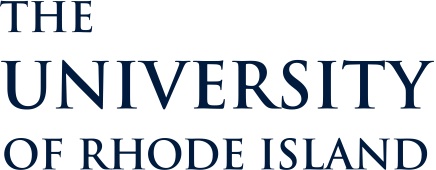For immediate releaseContact: Lisa Cugini, (401) 874-6642 [email protected]
Planetary Waves Discovered to Have Role in Plankton Production
Research adds a piece to global warming issue
Narragansett, R.I.--March 9, 2001--Three University of Rhode Island Graduate School of Oceanography (GSO) scientists have discovered that planetary waves traveling thousands of miles have a significant impact on the abundance of phytoplankton in the upper ocean, and may play a role in predicting global warming.
In a recent issue of Nature, biological oceanographers Mete Uz and James Yoder and physical oceanographer Vladimir Osychny reported on their two-year analysis of satellite-derived data on chlorophyll and sea-surface-height. The data shows that planetary waves, waves that travel in a westward direction in the oceans, are associated with five to 20 percent of the variability in chlorophyll concentration. The scientists theorize that disturbances in the ocean caused by these waves are bringing nutrients to surface waters on a global scale and affecting the production of phytoplankton.
Advances in satellite technology have allowed scientists to observe and study such phenomena as they can now view the Earth's bodies of water as a global system of connected oceans.
Uz and his collaborators used ocean color data from NASA's SeaWiFS program and concentrated on the role of large planetary, or Rossby, waves in enhanced biological productivity. These enormously wide, slow moving waves, are only a few centimeters in height, making them observable only through satellite imagery. A Rossby wave can be hundreds of miles wide, but moves so slowly that it could take months or years for it to cross the ocean. As this wave passes, it causes water motion that pumps more nutrients from the depths to the surface waters of the ocean.
A unique component of this study is the use of wave physics to help explain a biological phenomenon.
"For physical oceanography, this study presents one more tool with which to observe Rossby waves, especially their vertical dynamics," said Uz. "For biology, it illustrates for the first time a wave propagating through an ecosystem. This means that at the large spatial and temporal scales at which these waves operate, one can not think of biology as a functional block separate from physics. If you want to guess what the productivity will be at a given location and time in the future, you can not use a purely biological model. The coupling between physics and biology is important."
The study also adds indirectly to the scientific knowledge about the oceanic carbon cycle, a significant factor for predicting global warming.
"Biological productivity in the ocean is one of the ways carbon dioxide is removed from the atmosphere," added Uz. "The ocean removes enough carbon that any variability in this uptake has significant impact on the projections of global warming. We do not know enough about all the mechanisms that control the strength and distribution of biological productivity in the ocean. This means that we are not at a position to make a reasonable guess about how the ocean will respond under different scenarios of global change. However, our research puts in place one more piece of the jigsaw puzzle of oceanic carbon cycle."
The URI Graduate School of Oceanography is one of the country's largest marine science education programs, and one of the world's foremost marine research institutions. Founded in 1961 in Narragansett, RI, GSO serves a community of scientists who are researching the causes of and solutions to such problems as acid rain, global warming, air and water pollution, oil spills, overfishing, and coastal erosion. GSO is home to the Coastal Institute, the Coastal Resources Center, Rhode Island Sea Grant, the Ocean Technology Center, and the National Sea Grant Library.
###
